by Peter Bennett
In writing my book, Life Lessons of a Harvard Reject (www.HarvardReject.com), due out next month, I came across Thomas Jefferson’s quote, “I cannot live without books,” a sentiment he expressed in a letter to pen pal and former president John Adams in 1815.
That got me thinking about which book or books La Verne residents would name that they couldn’t live without. So, I set out yesterday morning, on “Garage Sale Saturday” in La Verne, to get a few answers in my very unscientific sampling:

Tony
“The Bible,” said Tony Mergil, 67, who lives across the street from Sunland Tire in downtown La Verne. “I had a stroke not too long ago, and I prayed to the lord. My doctors said I wouldn’t be able to walk. Now I’m walking around and getting better and better.
“Every morning I read it and pray. I keep my faith. I go to church every Sunday. I watch what I eat now. Before I was working seven days a week, 10 hours a day and eating off the food catering truck, and it just caught up to me.”
Up the street at the next garage sale, I met Olga Madera-Meza, who answered my question after selling a shopper a used Rod Stewart CD.
“The Good Earth by Pearl S. Buck,” she replied. “Over the years I put together a list of books I wanted to catch up on. The Good Earth was one of about 50 titles I gave my son for Christmas ideas for me. The next one on my list is The Alchemist.
The Good Earth, which earned Buck the Pulitzer Prize in 1932, portrays family life in a Chinese village before World War II. Meanwhile, The Alchemist by Paulo Coelho follows a young Andalusian shepherd named Santiago in his journey to Egypt, after he has a recurring dream of finding treasure there. With more than 65 million copies sold, it is one of the best-selling books in history and owns the Guinness World Record for most translated book by a living author. The book was originally written in Portuguese.
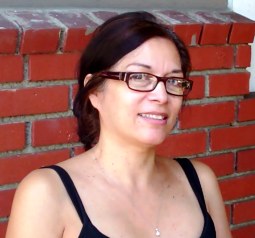
Olga
Across the street from Olga, Kim Corona was helping her family run a brisk garage sale. She also named must-have two books in her bookshelf.
“A Different Mirror [1993] by Robert Takaki,” she said. “It was a book that really made you angry but it was enough to keep you wanting more. It really showed the path that each culture took to establish itself here in the United States. It’s a really gripping book, and a great history book.”
Takaki taught the first Black History course at UCLA and led the development of an undergraduate ethnic studies major and an ethnic studies Ph.D. program at UC Berkeley.
Kim’s second book was Women Who Run with the Wolves (1992) by Clarissa Pinkola Estés.
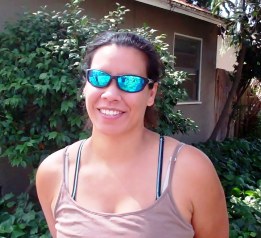
Kim
“It’s a great book for women who are looking to find their inner-selves. It’s kind of like my Bible to keep me on track and not allow me to fall into the same obstacles or mistakes that I’ve made in my younger years. It’s wonderful, and I read it whenever I’m feeling down or need a little injection of self-motivation. I just flip open to whatever page, and the words just kind of happen. People say they do that with their Bible. That book does it for me.”
Across from Roynon Elementary on D Street, I encountered Randy Rodello and his two sons, Kamil and Nick. Again, I was impressed with the literary leanings of the respondents, who were just as willing to talk books as haggle over the price of a used arm chair.
“For Whom the Bell Tolls,” Randy chimed in. “Hemingway. I was in honors English my senior year and my teacher told me to read it. I had never read Hemingway before. It was beautiful. Just the way he was hiking the hills and he was looking down. I just remember parts of the book. But I remember the book because I read it three times that year. I haven’t read it since, but I do want to read it again.”
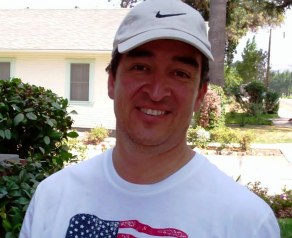
Randy
Kamil, a student at Ramona, named Where the Red Fern Grows (1961) by Wilson Rawls.
“It was a great book,” Kamil said. “It showed the old times [1960s]. It showed how the kid had a passion for animals, and he really wanted to do something. The kid had nothing and he saved up his money and bought two dogs. It was just a great story and it was really moving.”
The novel was made into a popular 1974 film starring Stewart Petersen, James Whitmore and Beverly Garland and popularized again in a second 2003 film version starring Joseph Ashton, Dabney Coleman, Ned Beatty and Dave Matthews.
Nick’s favorite was 20,000 Leagues under the Sea (1870) by Jules Verne. “It was really interesting how he kind of predicted what would happen in the future with things like submarines,” he said.
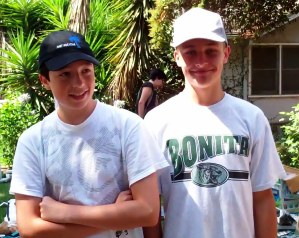
Nick (left) and Kamil
The next garage sale took me across White Avenue, where I met the Garcia family. Husband Adrian chose to name a magazine instead of a book.
“Playboy. There is nothing else,” he said. The articles are fabulous, and you can’t go wrong with the cartoons, and the bonus, the women, you can’t go wrong with those.
“I’m a lifetime member. When I was 18, I had a girlfriend and she bought me a lifetime membership. It follows me wherever I go. I have a helluva collection, but I can’t sell them at a yard sale, because it’s not PG.”
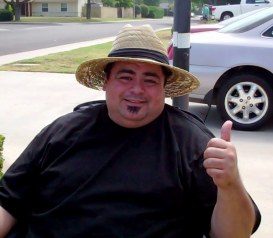
Adrian
Robin has a connection with Playboy, too, but a very different one. Her favorite author is Jenny McCarthy, who began her career in 1993 as a nude model for Playboy and was later named its Playmate of the Year.
“We have an autistic son and she has an autistic son, and she wrote a couple books, and without the guidance and the view of another person, I think I would be the only person to go through it. Because of the way she is and her persona, the way men see her and the way I read her as a mom are completely different. But I would take her books with me.”

Robin and daughter
After leaving the Garcias, I found Cindy Uballo hawking her wares.
“Would a dictionary count?” she asked. “I think a dictionary is a very important book, because I’m a bad speller and because my kids are in school, so it helps them obviously.”
My next turn took me to the Tolar (rhymes with solar) family.
The Bible is the only one I couldn’t live without,” Cindy Tolar said. “But I would say any book that might be passed down from one family member to another where the content was encouraging. I’ve known others who have had a book passed down from a grandparent or a great aunt, and it’s had great significance in their life. Heritage as well usefulness. You sit back and think about the person who pored over the pages and how it might have impacted their lives. ”
”
My final stop was on a cul de sac, north of Foothill near the Mormon Church. Curtis Dean had just sold a beautiful black and gold Singer sewing machine for $35, about $20 under asking price. It was so beautiful I almost wanted to buy it, and I don’t even sew.
Curtis was the quintessential multi-tasker making change for the woman who bought the sewing machine and answering my question about the one book he could not live without:
The Wealth of Nations [1776],” he said unhesitatingly. “It is the predominant, and how do I say, the consummate definition of what capitalism is. The Wealth of Nations, I would believe, would be one of the hallmarks of our civilization.”
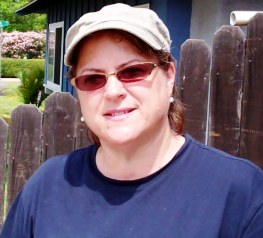
Cindy Tolar
And there you have it, my unscientific sampling complete. From the Bible to Adam Smith’s The Wealth of Nations (penned the same year as Thomas Jefferson wrote the Declaration of Independence, coincidentally) books (and at least one magazine) hold a special place for the residents of La Verne.
If you’re a book lover like Thomas Jefferson, let us know what one book you absolutely could not live without!
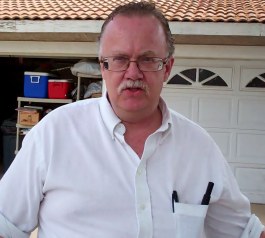
Curtis



Leave a Reply